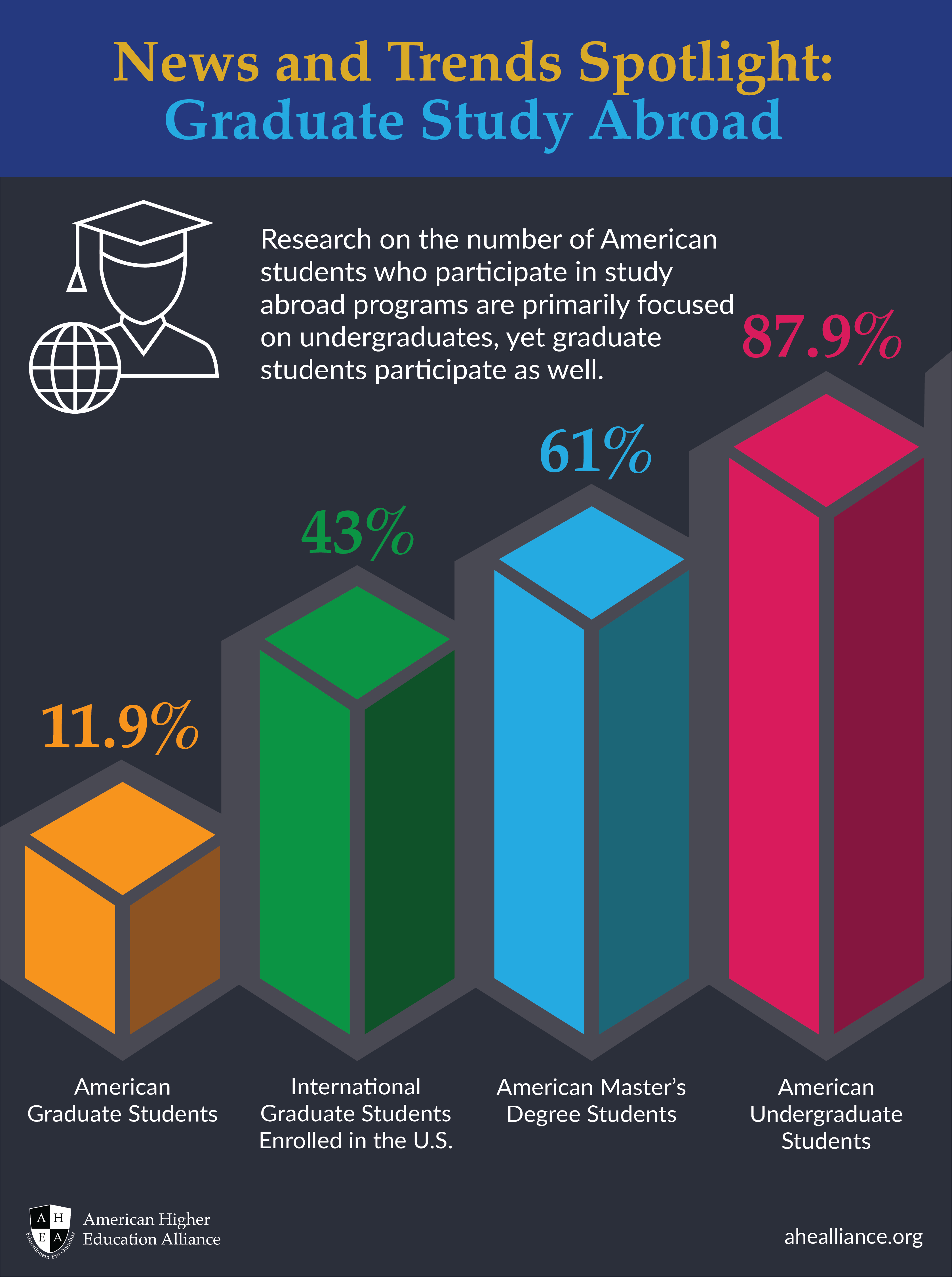
News and Trends Spotlight: Graduate Study Abroad

Research on the numbers and experience of American students who take part in study abroad programs tends to be primarily concerned with the undergraduate student population. However, graduate students also participate in study abroad activities, as documented by the IIE’s Open Doors project. The most recent of these reports indicates that graduate students comprised 11.9% of the 332,727 students who took part in study abroad programs during the 2016/17 academic year. Of these, the vast majority (61%) were master’s degree students, followed by those enrolled in professional schools (17%), and doctoral students (5%). In terms of recent trends, this figure represents a downward slide from a high of 13.6 in 2009/10. The full report is displayed below:
This picture contrasts sharply with the characteristics of foreign students enrolled in US institutions. For example, of 891,330 international students in the US, 382,953 – or 43% -- were graduate students. The breakdown between masters and doctoral students is also not as extreme: Although masters students are once again in the majority of foreign graduate students, those in doctoral programs comprise 41% of the total.
For institutions wishing to increase the level of graduate student participation in education abroad programs or simply learn more about the possibilities, information is available from sources such as NAFSA. In a recent work which appeared in that organization’s flagship journal, stress is placed on articulating how such programs should serve specifically graduate student learning outcomes. As one of the educators interviewed in this piece observes, ‘it’s really important to think through what the goals of the program are… At the graduate level it’s usually not so much about broadening students’ horizons as giving them opportunities to get deeper into the study of an academic topic in a structured way. It’s important for the structure of the program to match the program objectives.Re’[1] The leaders of Michigan State University’s Graduate Learning Experiences and Outcomes study group concur: ‘While similar,’ they write, ‘in some respects to undergraduate study abroad, graduate level study abroad should represent a fundamentally different experience.’ Program developers should thus be prepared to address some fundamental questions concerning ‘what makes study abroad a graduate-level experience?’ – the answers to which should serve as a guide to future planning.’[2]
[1] Janet Hulstrand, ‘Education Abroad for Graduate Students’, International Educator (Jan/Feb 2015), NAFSA, pp. 46-47.
[2] John M. Dirkx, Kristin Janka Millar, Brett Berquist, and Gina Vizvary. ‘Graduate student learning abroad: Emerging trend?’ International Higher Education 77 (2014), p. 15.
